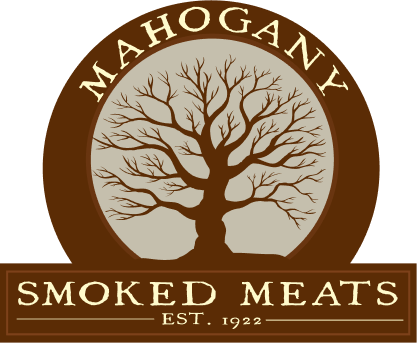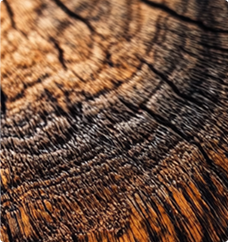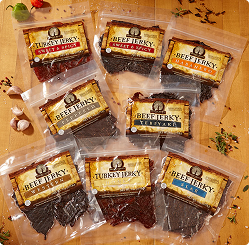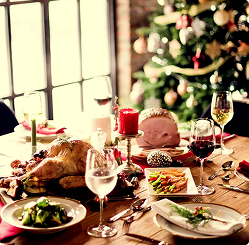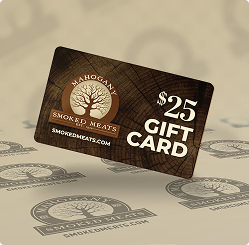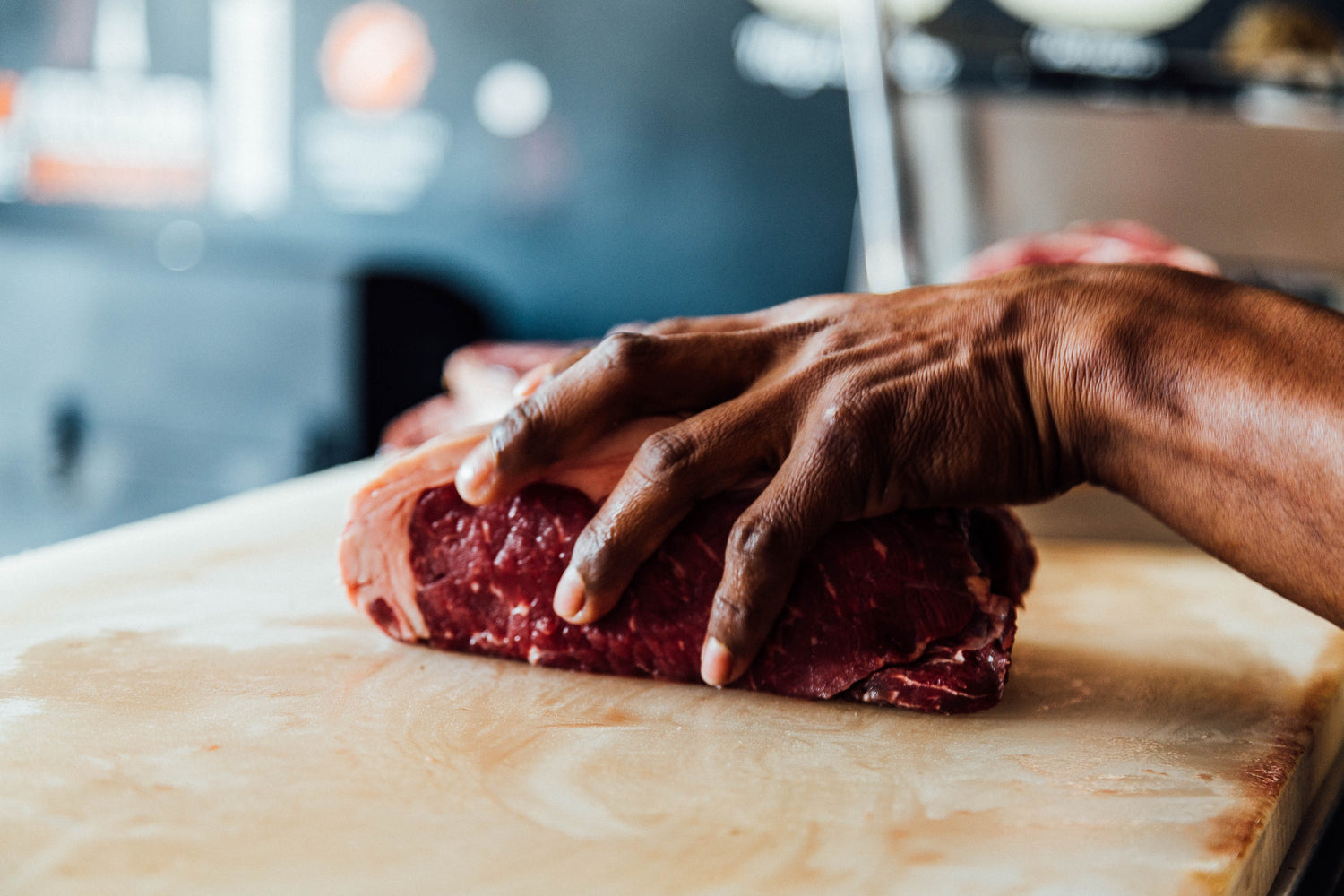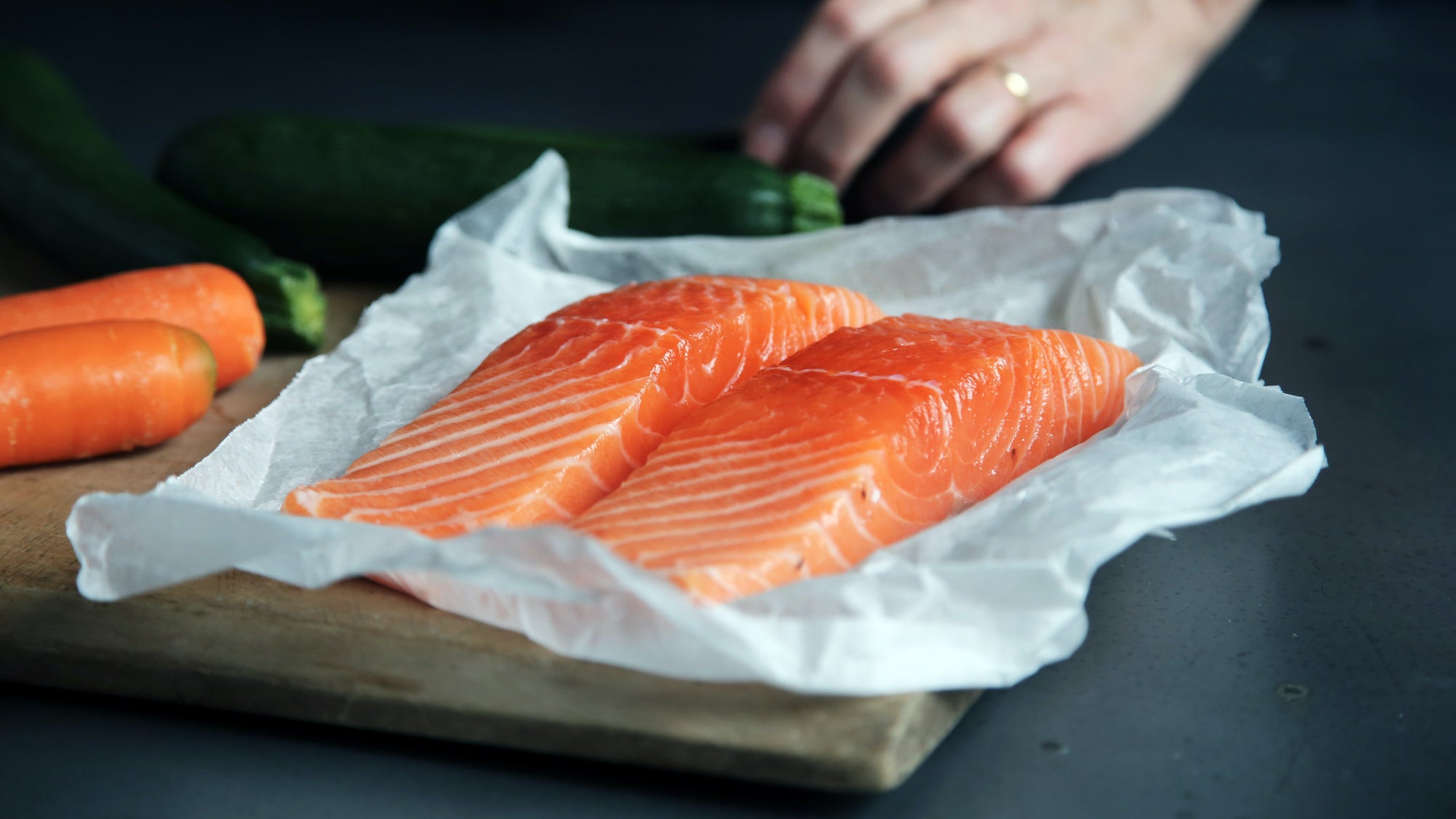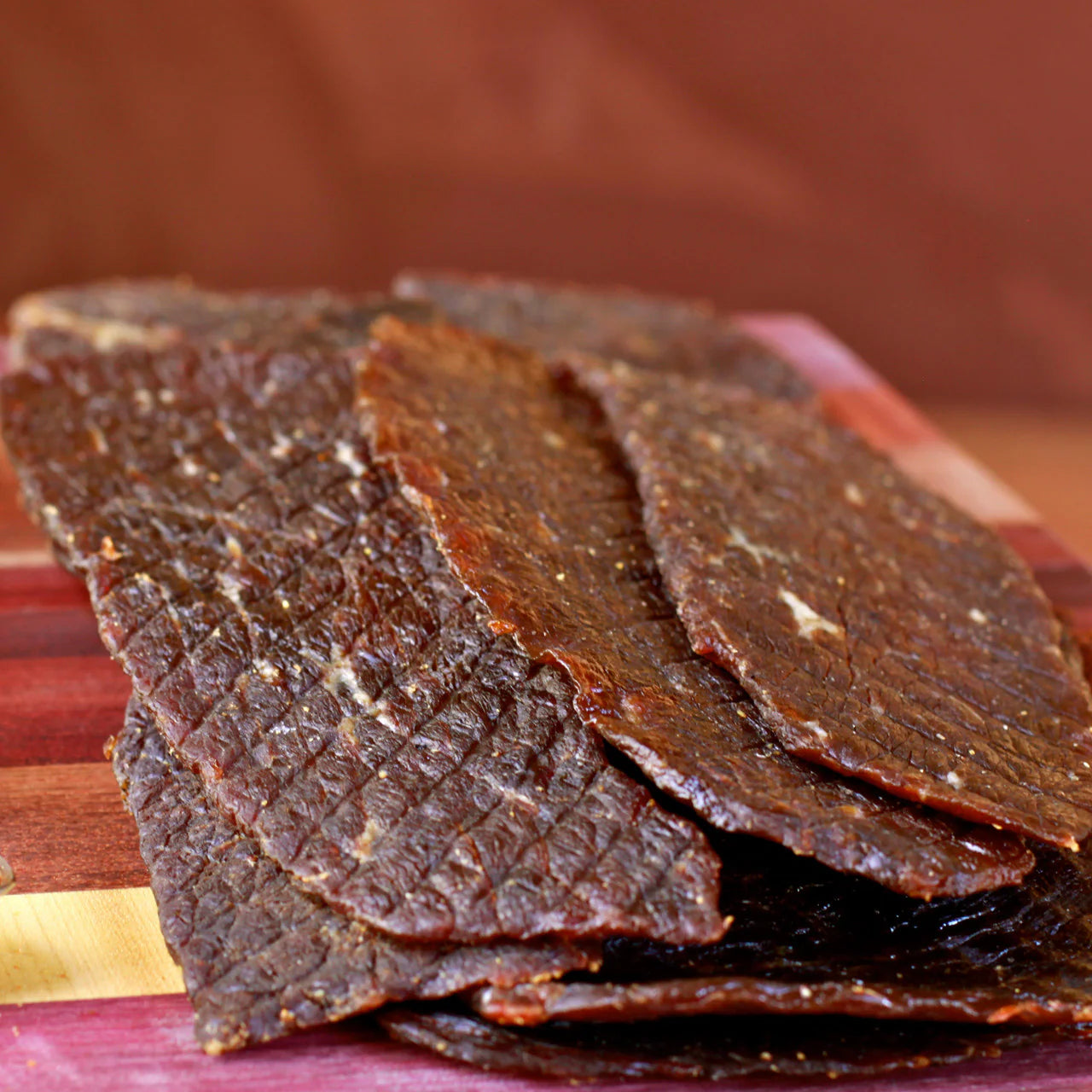Elk jerky offers a rich and robust flavor. It’s a gourmet twist for those seeking a gamier beef jerky alternative. But, finding quality elk jerky can often feel like looking for a needle in a haystack while blindfolded.
We’re here to save you the frustration of wasting your money on lackluster jerky and ending up disappointed. Our elk jerky for sale is the #1 choice online. We craft our jerky in small batches using a unique mahogany wood smoking process that brings out the true flavor of our ethically sourced meats.
Discover what makes Mahogany Smoked Meats your trusted choice for the best online jerky below as we dive into what separates our selection from the rest and offer a few exciting flavor varieties you can start with. Let’s start by highlighting the appeal of elk jerky in the first place.
Why We Love Elk Jerky
From the elk nutrition facts to the unique, gamey flavor this type of meat imparts, there is a lot to love about elk jerky!
Health and Nutrition Benefits
There’s no denying the beef jerky nutrition facts. With high beef jerky protein and low beef jerky calories, this is a nutritious snack you can always count on. Elk takes this a step further with more protein and less fat. It’s one of the healthiest jerky types you can get your hands on.
Each serving of elk jerky is packed with essential nutrients, including iron, zinc, and B vitamins, vital for energy, muscle growth, and overall wellness.
Unlike some other red meats, elk is lower in cholesterol and saturated fats, making it a heart-healthier option. It's also a great source of omega-3 fatty acids, known for their anti-inflammatory properties.
For those on ketogenic, paleo, or gluten-free diets, elk jerky is a perfect fit, offering high nutritional value without the carbs.
Unique Flavor and Texture Experience
Elk meat is known for its lean yet tender nature, providing a satisfying chew that's not overly tough. The taste is a harmonious balance between the robustness of beef and the subtle gaminess of deer, creating a unique umami experience.
This distinct flavor is enhanced through smoking and seasoning, where the natural taste of elk is complemented, not masked. Each bite offers a hint of wilderness, an echo of the vast landscapes where elk roam.
What Separates the Best Elk Jerky From the Rest?
The combination of healthful benefits and distinct flavor profile makes elk jerky a gourmet delicacy, appealing to both jerky enthusiasts and those seeking a flavorful, nutritious snack.
But, what separates the best elk jerky from the rest - how can you ensure you’re getting the culinary experience you deserve? Let’s about the things you need to consider when shopping for elk jerky online to feel confident placing your order.
Quality of Meat and Sourcing Standards
Just as you need the best cut for beef jerky for a quality final product, starting with the best cuts of elk meat is a non-negotiable. Premium jerky starts with ethically sourced, free-range elk, ensuring the animals have roamed and grazed in natural habitats.
This not only contributes to the sustainability of wildlife populations but also impacts the quality of the meat. Free-range elk tend to have leaner, more flavorful meat due to their natural diet and active lifestyle.
Moreover, the best elk jerky brands adhere to rigorous sourcing standards. They ensure that the meat is procured from reputable suppliers who practice humane animal treatment.
This includes avoiding hormones and unnecessary antibiotics, which can affect the meat's taste and consumer health.
The freshness of the meat at the time of processing is another crucial factor. Freshly sourced meat retains its natural flavors and textures better than meat that has been frozen for extended periods.
Smoking and Drying Process
The smoking and drying process is where the artistry of making elk jerky truly comes into play. The best jerky is often smoked over carefully selected woods that complement the natural flavors of the elk meat.
Woods like hickory or mesquite provide a robust, smoky undertone, while fruitwoods like apple or cherry can impart a subtle sweetness. But as you’ll soon discover, it’s our unique mahogany wood smoking process that sets our jerky apart from the rest. We consider this the best wood for smoking elk jerky.
Control over the drying process is equally important. The optimal drying technique involves a slow, controlled process that preserves the meat’s tenderness while imparting a satisfying chewiness. Over-drying can lead to a tough, leathery texture, while under-drying poses safety concerns.
The best brands have mastered this balance, ensuring that each batch of jerky maintains consistent quality. We talk more about the importance of jerky dehydration temperature and how long to dehydrate jerky in our blog if you’d like to learn more.
Flavor Varieties to Keep Things Fresh and Fun
Variety is the spice of life, and this holds true for elk jerky as well. Leading brands often offer a range of flavors, from traditional recipes that highlight the meat's natural taste to innovative blends that introduce exciting new taste profiles.
Seasonings can range from simple salt and pepper to complex mixes incorporating herbs, spices, and even international flavors. The best elk jerky marinade is key, so look into the ingredients that make up a product. We’ve talked about our favorite elk jerky recipe in our blog if you’re looking for a recommendation.
Brand Considerations: Shipping, Pricing, Satisfaction Guarantee, and More
Beyond the product itself, brand considerations play a significant role in differentiating the best elk jerky from the rest. Customer service cannot be overlooked when shopping online.
Fast and reliable shipping ensures that customers receive their jerky fresh and ready to enjoy. Proper packaging is essential not just for preserving the jerky's quality during transit but also for maintaining its shelf life.
Pricing is another critical aspect. While premium elk jerky may command a higher price due to its quality, the best brands balance this with fair pricing strategies, offering good value for money. This is something we talk about more in our guide to the cost of jerky.
Lastly, a satisfaction guarantee reflects a brand's confidence in its product and its commitment to customer service. It assures buyers that they are making a risk-free purchase, which is particularly important for new customers who might be trying elk jerky for the first time. You’re able to place your order with confidence.
So, What is the Best Elk Jerky?
As we said from the start, your search for the best elk jerky ends right here at Mahogany Smoked Meats.
With more than 100 years of experience under our belts, we’ve fine-tuned our process and have earned the trust of individuals around the country.
Find out what makes our jerky so great below and discover your new favorite healthy snack!
Why Mahogany Smoked Meats is the #1 Choice for Elk Jerky Online
Since 1922, we've been perfecting the art of smoking meats, embracing the old-fashioned deep log-pit smoking method that sets our jerky apart. Our commitment to small-batch, slow-smoked meats, hand-sliced to perfection, reflects our dedication to craftsmanship.
Our use of mahogany logs, selected only from naturally fallen trees, gives our elk jerky a unique depth of flavor. Mahogany, known for its density and rich aroma, is about seven times heavier than hickory. This results in a longer, deeper smoking process, infusing the meat with an incomparable taste and aroma that has made our smokehouse renowned.
In addition to our distinctive smoking process, we pride ourselves on our premium-sourced meats. Our commitment to quality extends to ensuring a natural, preservative-free product with no MSG or nitrites. Each batch is cooked with care, packed fresh, and shipped fast to ensure you receive the highest quality product.
We value each customer as part of our extended family. When you choose Mahogany Smoked Meats, you can rest assured you’re getting a delicious, nutritious snack. We offer a 100% satisfaction guarantee to protect your purchase.
And if you’re still not sure, just read some of the reviews we’ve earned over the years to get a sense of what awaits you in that first bag of elk jerky…
Don’t Just Take Our Word For it - Hear From Others Who Tried Our Elk Jerky!
We’re confident you’re going to agree this is the best elk jerky you’ve ever tasted. But you don’t have to take our word for it. See what a few of our customers had to say after getting a taste themselves:
“Absolutely love the flavor of peppered elk jerky. My go-to jerky for camping, hiking, or just everyday use. Everyone who tries some of mine always wants to know where I got it from and of course, I let them know about all the different flavors and meats they have at Mahogany meats.com” - Robert
“This is by far the best jerky I have ever had! It’s always fresh and delightfully fresh with perfect seasoning. My orders always arrive so fast. If you have never tried this jerky you are missing out on a delicious treat.” - Alex
“Absolutely the most tender juicy meat and with the black pepper for added flavor and zest!:) Always a crowd pleaser in my house when family and friends are around.” - David
“I thought it was very good and I like that fact I could bite through the elk with little effort and it tasted very good. I would order it again.” - Onel
“The Teriyaki Elk Jerky has always been my favorite 😋 I love the moist thickness🫠 I haven’t physically been to your store in years, but I remain a faithful customer and I always tell jerky lovers I meet about Mahogany Smoked Meats. Thank you so much for your delicious store.” - Melinda
Our Favorite Flavors
We currently have two great elk jerky varieties to choose from, each offering a distinct taste that will leave you craving more and more:
- Black Peppered Jerky: Thickly sliced and marinated in a proprietary blend of teriyaki sauce, brown sugar, and soy sauce, it offers a complex and delicious flavor profile. The finishing touch of cracked white pepper adds a hint of heat that is irresistible. Ideal for an afternoon snack, a hiking refuel, or as a savory companion on road trips.
- Teriyaki Jerky: Our leanest and most flavorful snack. This healthy, mouth-watering treat is marinated in a distinctive blend of all-natural ingredients for maximum flavor. Small-batch cooking allows us to maintain the highest quality, ensuring every bite is as flavorful as the last. Perfect for camping, a quick desk snack, or a post-workout refuel.
These are great staples to keep in your snacking arsenal. But, they’re just the tip of the iceberg at Mahogany Smoked Meats. We encourage you to try the other types of jerky we have in store for you, ranging from our classic beef jerky recipes to our fish jerky recipes, buffalo jerky recipes, and other premium jerky varieties awaiting you!
Quick Tips for Enjoying Our Jerky to the Fullest: Pairings, Storage, and More
We want you to enjoy our meats to the fullest, which is why we want to offer a few tips before wrapping up this guide to the best elk jerky.
Pair your elk jerky with complementing flavors like sharp cheeses or tangy fruits for a gourmet snacking experience. Store your jerky in a cool, dry place to maintain its freshness and texture. For an enhanced taste, try warming it slightly before eating.
You can learn more about jerky in general in our blog - we have resources like does jerky go bad, how long does jerky last, beef jerky for weight loss, smoked jerky vs dehydrated jerky, how to cut meat for jerky, and more.
Otherwise, it’s for you to taste the difference at Mahogany Smoked Meats. Whether you’re looking for the best elk jerky, the best fish jerky, or anything in between, you can expect to be overwhelmed with tantalizing flavors in every bite!
Taste the Difference at Mahogany Smoked Meats Today!
Elk jerky is a delight for its unique flavors and nutritional benefits, and the best among them stand out with premium meat quality, meticulous smoking, and diverse, exciting flavors.
Mahogany Smoked Meats excels in all these areas, offering a century-old legacy of carefully crafted, all-natural, and irresistibly delicious elk jerky. We can’t wait to hear what you think after trying that first bite.
But as we said a few times throughout this conversation, we also want you to try our beef jerky for sale, fish jerky for sale, boar jerky for sale, buffalo jerky for sale, and all the other great varieties we have in store for you. Each has its place in your pantry!
For an unmatched taste experience that embodies the best in quality and variety, visit Mahogany Smoked Meats today and savor the difference with every bite. You won’t regret it!
